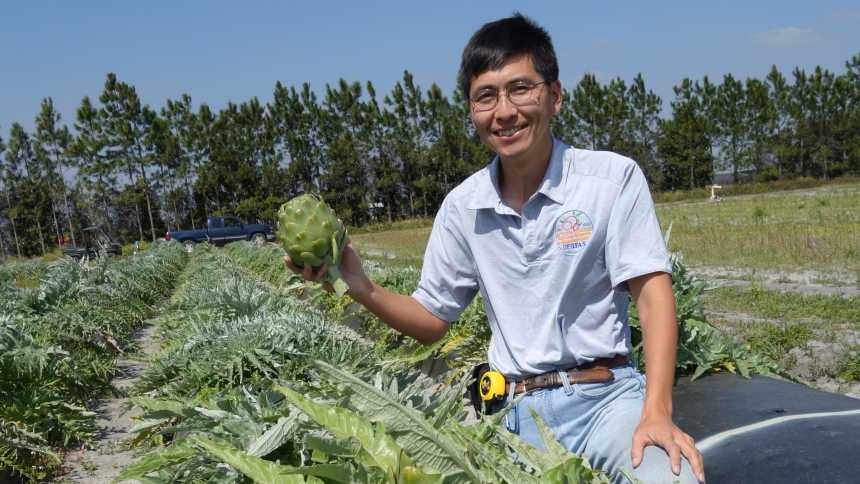Artichokes Emerging as Viable Alternative for Florida Farmers

Shinsuke Agehara, a UF/IFAS Assistant Professor of Horticultural sciences, believes he can grow artichokes in Florida, despite the crop’s need for a cooler environment.
Photo courtesy of UF/IFAS
A year ago, Shinsuke Agehara, a UF/IFAS Assistant Professor of Horticultural Sciences based at the Gulf Coast Research and Education Center in Balm, received a $90,000 federal grant to study how to establish an artichoke system for Florida growers. Today, it appears the time, effort, and money put into researching the potential of this alternative crop was well spent.
Agehara presented his preliminary findings to the Florida State Horticultural Society last week in Tampa. During his talk, he revealed the ‘Imperial Artichoke’ shows the most promise of growing in Florida’s warm, humid climate. However, growers will need to use a natural plant hormone called gibberellic acid to maximize growth. With help from the acid, a grower can produce as much as 6,000 pounds of ‘Imperial Artichoke’ per acre, according to Agehara. By comparison, California producers can grow up to 13,500 pounds of artichokes per acre since it’s cooler there.
California grows 99% of the nation’s artichokes. A warm winter would likely present an obstacle for Florida growers. To form buds, artichokes generally require at least 250 to 500 cumulative hours below 50°F. Therefore, flowering must be artificially induced to produce artichokes in Florida. “Once we optimize the hormone application rate, I think we can increase the yield closer to the commercial yield in California,” Agehara stated.
So, should Florida growers consider artichokes as an alternative crop? The retail price of an artichoke can be up to $5, and each plant can produce several buds, Agehara noted. You do the math.




